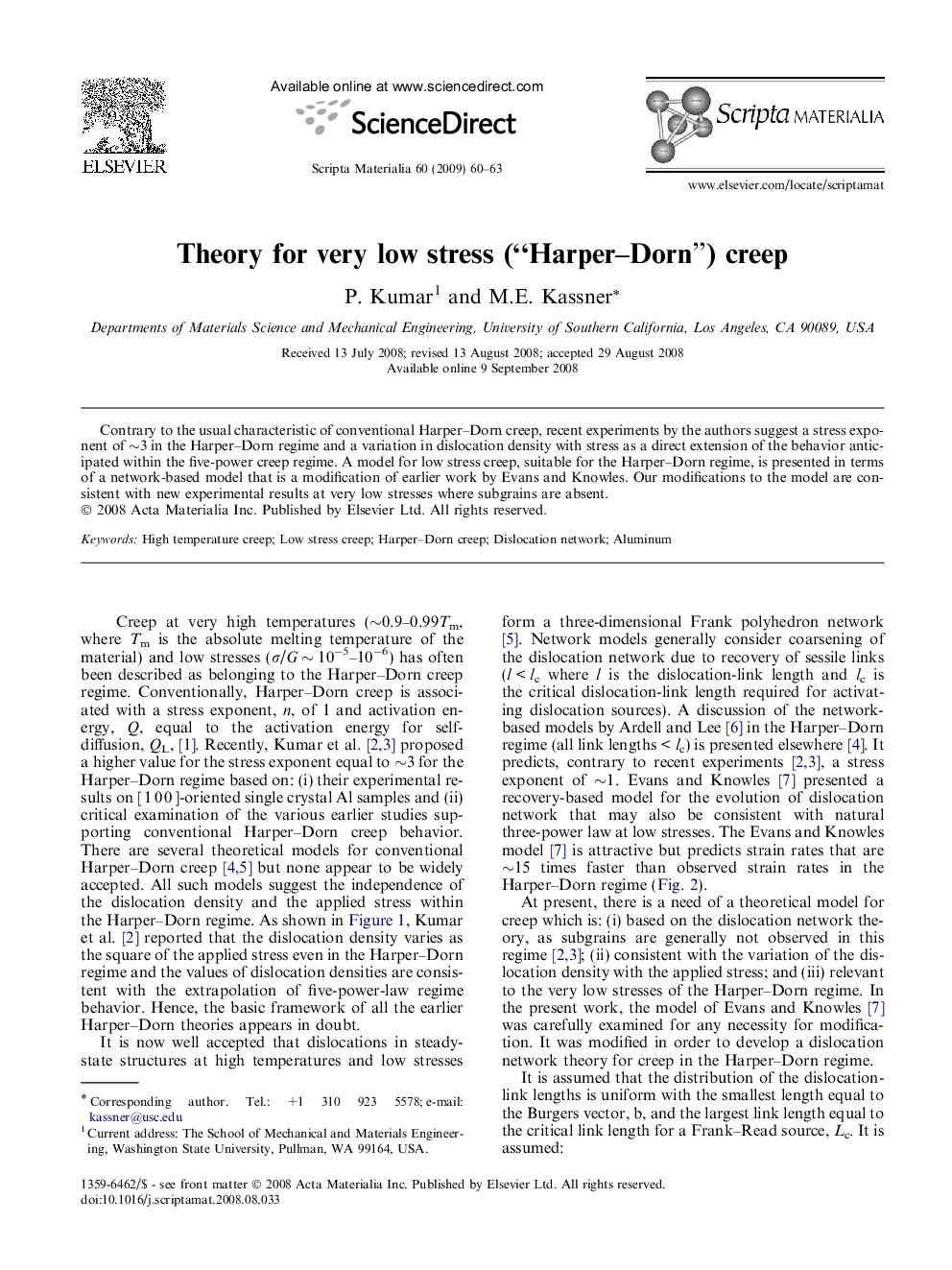| Article ID | Journal | Published Year | Pages | File Type |
|---|---|---|---|---|
| 1500719 | Scripta Materialia | 2009 | 4 Pages |
Abstract
Contrary to the usual characteristic of conventional Harper–Dorn creep, recent experiments by the authors suggest a stress exponent of ∼3 in the Harper–Dorn regime and a variation in dislocation density with stress as a direct extension of the behavior anticipated within the five-power creep regime. A model for low stress creep, suitable for the Harper–Dorn regime, is presented in terms of a network-based model that is a modification of earlier work by Evans and Knowles. Our modifications to the model are consistent with new experimental results at very low stresses where subgrains are absent.
Related Topics
Physical Sciences and Engineering
Materials Science
Ceramics and Composites
Authors
P. Kumar, M.E. Kassner,
